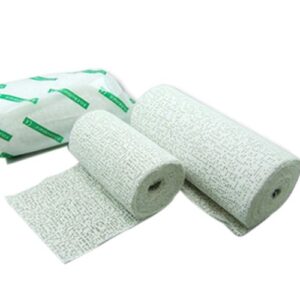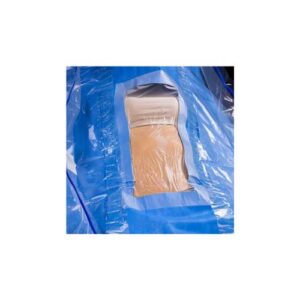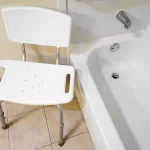Key Features of C-Section Drapes with Drainage Bags
Description
Key Features of C-Section Drapes with Drainage Bags: One of the most popular and crucial operations in the field of obstetric surgery is the cesarean section (C-section), which requires extreme caution, cleanliness, and precision. An essential tool for obstetric surgeons, the C-Section Drape with Drainage Bag improves both the effectiveness and safety of the procedure.
In order to improve postoperative care, this paper investigates C-sections in detail, discusses the relevance of specialized drapes, and explains the novel use of drainage bags. Let’s read below about “Key Features of C-Section Drapes with Drainage Bags”.
The Significance of Cesarean Sections
Necessity and Frequency
As a life-saving intervention, caesarean sections have become an essential component of contemporary obstetric treatment in cases where the mother or infant is at risk during a natural delivery. Foetal discomfort, breech presentation, repeated pregnancies, or concerns about the mother’s health can all play a role in the decision to have a C-section. Because healthcare systems and medical procedures are different across the world, the frequency of C-sections also varies.
Precision in Obstetric Surgery
To guarantee the safety of mother and child, obstetric surgeons must use the utmost precision during C-sections. In order to deliver the baby safely, the operation requires creating an incision through the abdominal wall and uterus. The effectiveness of a C-section depends on several factors, including the preservation of a sterile environment, the reduction of infection risks, and the optimisation of postoperative care.
The Role of Drapes in Cesarean Sections
Ensuring Sterility
In order to establish and maintain a sterile zone during a C-section, surgical drapes are required. Infections at the surgery site can have devastating effects for the mother and the baby, thus reducing this risk is of paramount importance. In addition to ensuring the safety of the surgical site, sterile draping helps the operation go smoothly.
Fluid Management
Blood, amniotic fluid, and other body fluids are released during caesarean procedures. In order to keep everything visible, stop contamination, and make sure the surgery goes well, fluid management is crucial. Drapes are specifically engineered to redirect fluids away from the surgical site. Enhancing the surgeon’s visibility and mitigating the likelihood of problems.
Facilitating Accessibility
The surgical team is able to operate more effectively with well-designed drapes because they enable excellent access to the operative site. Because careful incisions and suturing are required during C-sections, accessibility is of the utmost importance. Surgeons are able to easily access the abdominal and uterine tissues thanks to drapes that are custom-made to meet the individual needs of the treatment.
Evolution of C-Section Drapes
From Basic Drapes to Specialized Solutions
Surgical drapes have developed throughout the years, shifting from one-size-fits-all generic coverings to procedure-specific specialty options. Enhanced draping solutions for C-sections have been developed in response to the demand for features such fenestrations that allow for accurate incisions and adhesives that provide stable placement.
Integration of Adhesive Technology
These days, many kinds of surgeries, including C-sections, use adhesive drapes. The clear adhesive film on these drapes firmly sticks to the patient’s skin, preventing the spread of germs and keeping the operating area clean. Additionally, the adhesive technology makes it easy to apply and remove, reducing the likelihood of problems associated with draping.
Fenestrations for Precision
During surgery, fenestrations are carefully positioned to provide access to certain locations through gaps in the curtains. To ensure the sterility of the operating field, C-section drapes have fenestrations that line up with the surgeon’s intended incision location. This allows for accurate cutting.
The Innovative Integration of Drainage Bags
Addressing Postoperative Challenges
Postoperative care is just as important for the mother’s health as the surgical surgery itself following a C-section. The incorporation of drainage bags with C-section drapes is a response to postoperative complications such fluid drainage and hematoma development.
Fluid Collection and Management
If any fluids gather at the surgical site after the procedure, the C-Section Drape’s drainage bag can catch them. This encompasses a variety of exudates, such as blood and amniotic fluid. Avoiding problems like seromas or hematomas, which can slow recovery, requires effective fluid control.
Reducing the Risk of Infection
Aside from helping with fluid management, the drainage bag also helps in preventing infections. It is possible to reduce the likelihood of infection by collecting and storing fluids in a location separate from the incision. This is of paramount importance in obstetric procedures due to the increased risk of infection due to the close closeness of the reproductive organs.
Enhancing Patient Comfort
Both the surgical team and the patient experience more comfort in the postoperative period when drainage bags are used. The mother will have an easier time recovering if the drainage is efficient, as it lessens the chances of edoema and pain.
Key Features of C-Section Drapes with Drainage Bags
Sterility Assurance
By following strict sterilization protocols, C-Section Drapes with Drainage Bags keep the surgical field free of pollutants during the whole process. Postoperative infections are a major issue in obstetric procedures, and these drapes play a crucial role in avoiding them by creating a sterile barrier.
Adhesive Stability
Surgical stability and proper placement are guaranteed by the adhesive technology incorporated into these drapes. Securing the adhesive film to the patient’s skin ensures that the sterile field remains intact. .
Fenestrations for Precision Incisions
The fenestrations on C-Section Drapes with Drainage Bags are strategically placed to line up with the surgical incision site. This design minimises the possibility of contamination while allowing for accurate incisions. The fenestrations play a crucial role in the surgical procedure because they provide for precise and regulated access to the uterine and abdominal regions.
Transparent Film for Visibility
The drapes’ use of see-through material allows for unobstructed observation of the operating site. For the surgical team to track the procedure’s development, and evaluate the fetus’s health. And handle any unexpected complications that may emerge, this openness is crucial.
Integrated Drainage System
An effective and easy way to control fluids is using the drainage bag component, which is perfectly integrated into the drape. So that they don’t gather near the incision site, the fluids can be collected and contained in the bag.
Comfort Features for the Patient
These drapes are not only technically sound, but also include elements that will make the patient feel more at ease. To make the process of applying and removing it as painless as possible, we utilise gentle, non-irritating products. The design takes into account the patient’s comfort throughout the postoperative phase, which helps with their recuperation.
Clinical Application and Benefits
Optimizing Surgical Workflow
One way to make obstetric surgeries go more smoothly is with the use of C-Section Drapes with Drainage Bags. Thanks to the fenestrations, adhesive stability, and clear film, the operation goes smoothly and efficiently, letting the medical team provide the mother and baby the finest care possible.
Minimizing the Risk of Complications
Reducing the likelihood of problems following surgery is one of the primary functions of the integrated drainage system. The drainage bag lessens the chances of problems including hematomas, seromas, and infections by collecting and managing fluids properly. Improvements in patient outcomes are a result of this preventative method of postoperative treatment.
Enhancing Infection Control Measures
C-Section Drapes with Drainage Bags are specifically engineered to address the critical issue of infection control during obstetric procedures. There is a much lower chance of postoperative infections due to the sterile barrier that the drapes provide and the effective drainage of fluids. This is of the utmost importance during childbirth. As infections during this time can harm both the mother and the baby.
Improving Patient Experience and Recovery
One of the many elements that affects how a patient feels during and after a C-section is the surgical drapes that are used. A more favorable postoperative recovery for the mother is achieved by using C-Section Drapes with Drainage Bags. Which prioritize comfort features and effective fluid management.
Challenges and Considerations
Cost Considerations
Healthcare facilities may think twice about investing in C-Section Drapes with Drainage Bags due to the price tag, despite the obvious advantages. A thorough assessment is required to balance the improved features and advantages with the budget limitations.
Training and Familiarity
If new surgical drapes are introduced, it may be necessary to instruct the surgical staff on how to use them correctly. Maximizing the efficacy of these drapes in clinical practice requires familiarity with their specific features. Including adhesive technology and integrated drainage system.
Customization for Specific Scenarios
C-Section Drapes with Drainage Bags may need to be adjusted in terms of form or functionality to accommodate a wide range of obstetric circumstances. These drapes might be even more versatile if they included customisation options that addressed specific situations. Such high-risk pregnancies or specialised surgical needs.
Conclusion:
Finally, a major step forward in obstetric surgery has been the incorporation of drainage bags into C-Section Drapes. These specialised drapes meet the changing demands of postoperative care while still adhering to the guiding principles of cleanliness, accuracy, and ease of access. Adhesive technology, precise fenestrations, and an integrated drainage system work together to improve the surgical procedure and the patient’s comfort.
Surgical drape advancements highlight the dedication to improve outcomes for moms and infants as healthcare evolves. An example of the commitment to superior obstetric surgery is the C-Section Drape with Drainage Bag. Which provides a comprehensive answer by balancing the technical needs of the operation with those of the patient. More and more hospitals are implementing these innovations. Which bodes well for the future of obstetric care in terms of efficiency, safety, and the health of mothers and babies. I hope you like reading “Key Features of C-Section Drapes with Drainage Bags”.
Related products
-

Bandage Plaster of Paris B.p. 88 Extra-fast Healocast
0 out of 5Buy on Amazon -

Benefits of Lamino Spinal Drape
0 out of 5Buy on Amazon -

Bandage Skin Traction with Adhesive Tape, Crepe Bandage, Cord, and Plastic Plate
0 out of 5Buy on amazon -

Textbook of Sports Medicine Key features
0 out of 5Buy on Amazon







Reviews
There are no reviews yet.